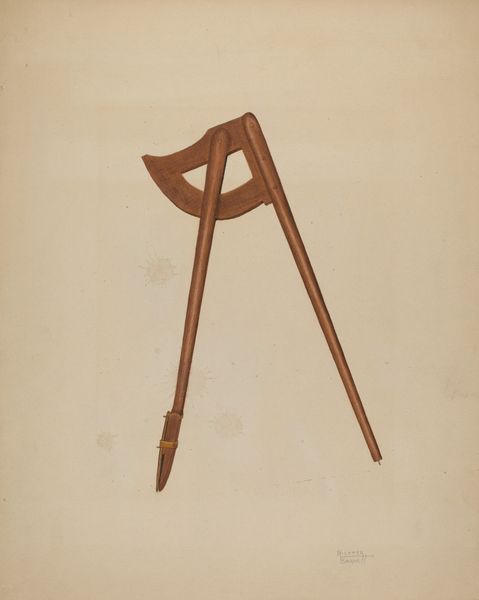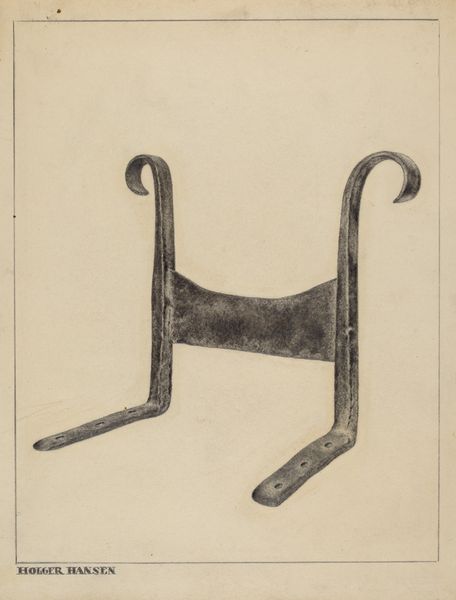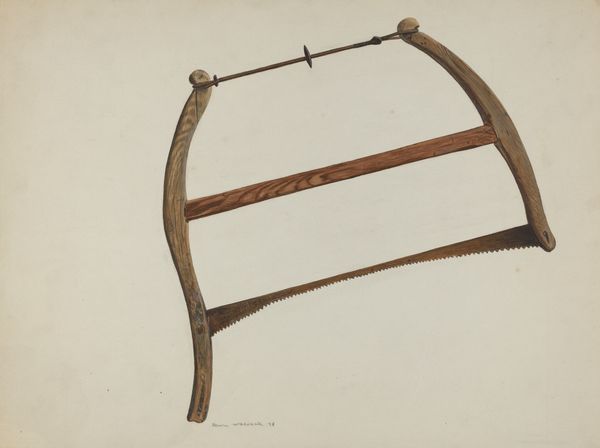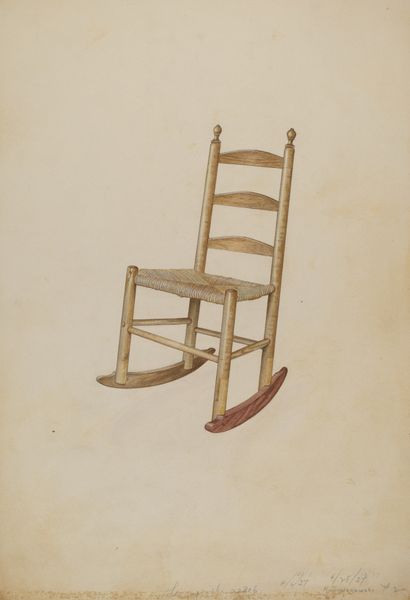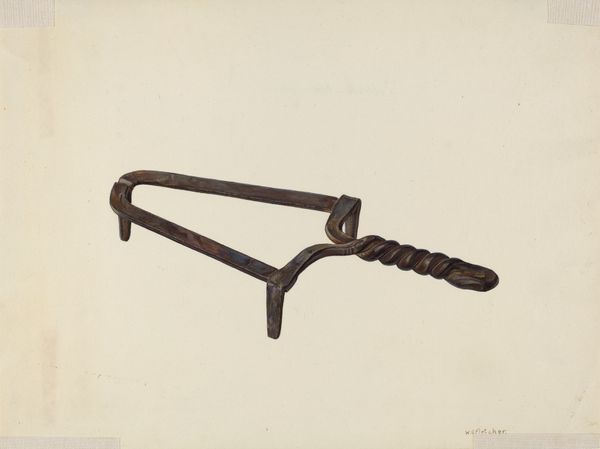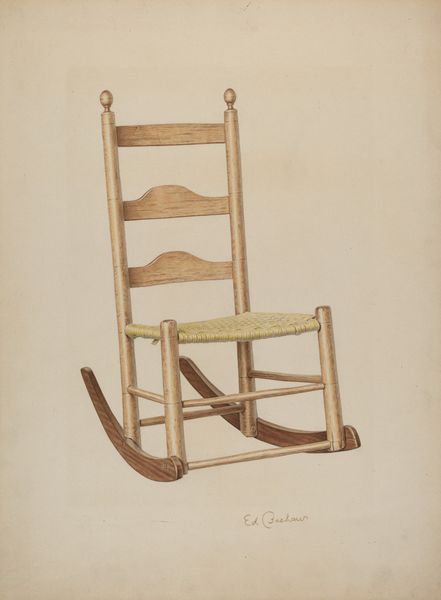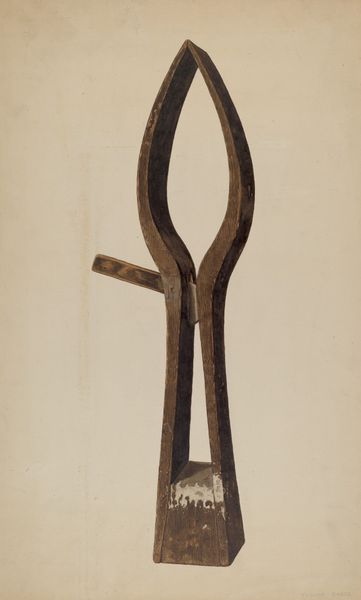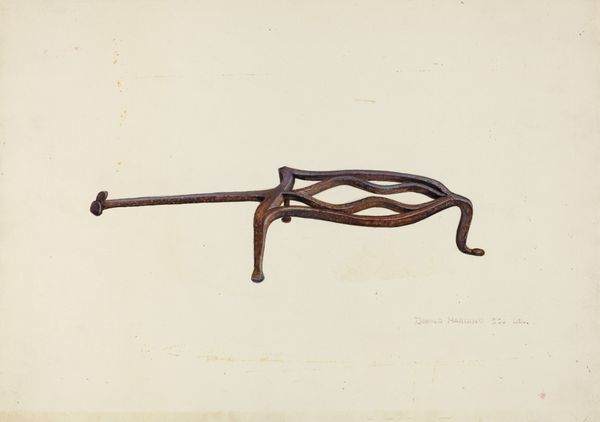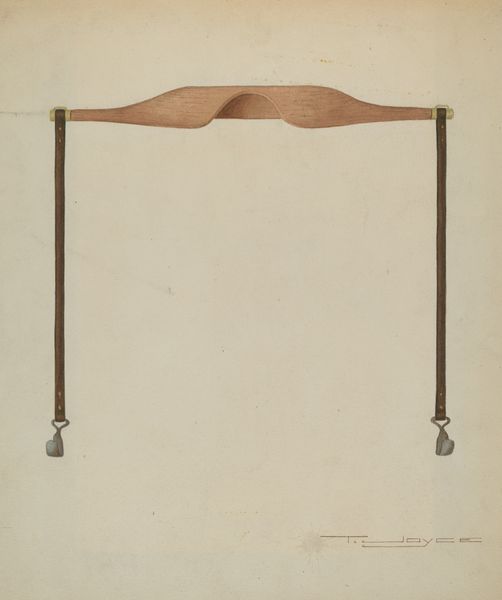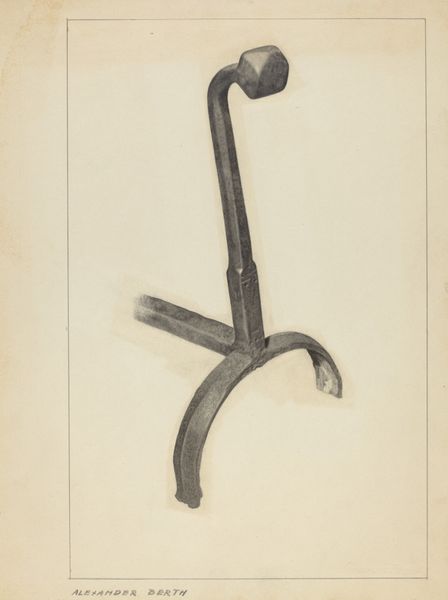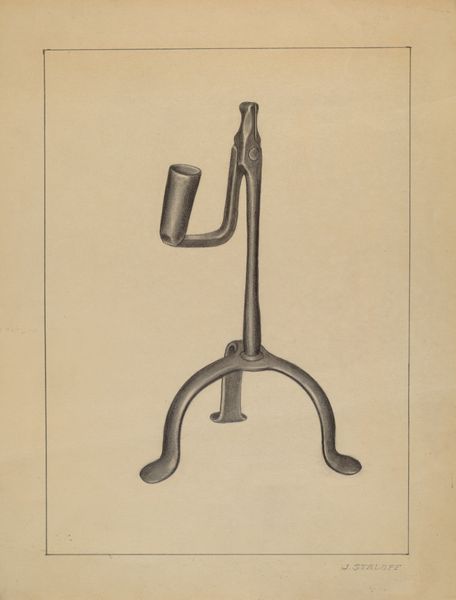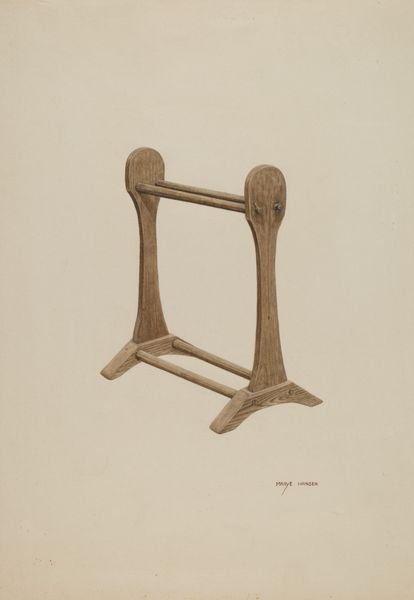
drawing, watercolor
#
drawing
#
watercolor
#
watercolor
#
realism
Dimensions: overall: 35.5 x 27.8 cm (14 x 10 15/16 in.) Original IAD Object: 24" high; 7 1/2" wide; hack: 16" long; 7" wide
Copyright: National Gallery of Art: CC0 1.0
Curator: Rex F. Bush's "Bootjack," executed in watercolor and drawing techniques circa 1937, offers us a fascinating subject. What are your initial impressions? Editor: Strikingly spare. The form, a bootjack, seems almost monumental against the bare ground of the paper. It also seems lonely somehow, doesn't it? Curator: Indeed. Consider how Bush has isolated the object, rendering it almost devoid of context. Note the interplay of vertical and horizontal lines, how the curves of the bootjack provide a soft counterpoint to the rigid structure. The visual focus really prioritizes shape. Editor: Absolutely. The bootjack as artifact… beyond utility, representing the removal of boots perhaps suggests homecoming, labor finished, or a shedding of the day's burdens. Its form almost like open arms—an understated welcome? Curator: An interesting interpretation, but I think it overstates the symbolic weight of a common household item. Still, note the almost technical precision in Bush's rendering; the meticulous capturing of light on wood grain… the realism is undeniable. Editor: True, but realism often serves a symbolic purpose. Bush could have chosen any object. The bootjack implies a certain history—a time of boots, outdoor work… a specific American experience. Even those visible rivet points suggest craft, labor. Curator: But that craft is distilled, simplified, through its composition and minimal colour palette. The very emptiness around the form makes you focus on what is there. One must look closely to find the beauty and structure in that simplicity. Editor: I think its power comes precisely from how commonplace it is—an object filled with implied use, resonating quietly, connecting us back through work, rest, and our material past. Curator: In Bush’s delicate study, what one gains through structure and formal examination, another gleans through symbols, the weight of history and the psychology of objects. Editor: The resonance, therefore, stems from our ability to meet on the common ground of interpretation. Thank you for sharing your perspective.
Comments
No comments
Be the first to comment and join the conversation on the ultimate creative platform.
